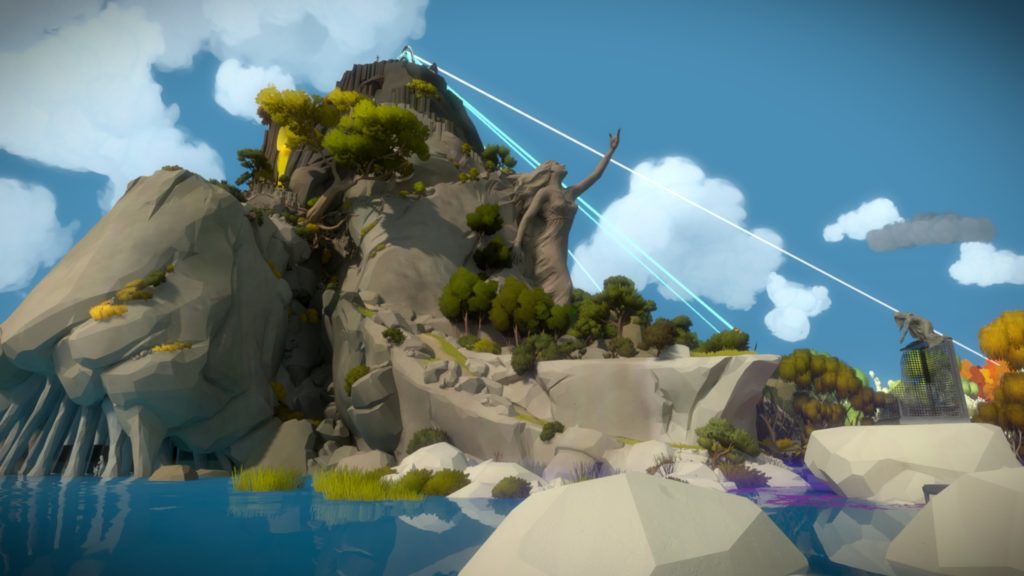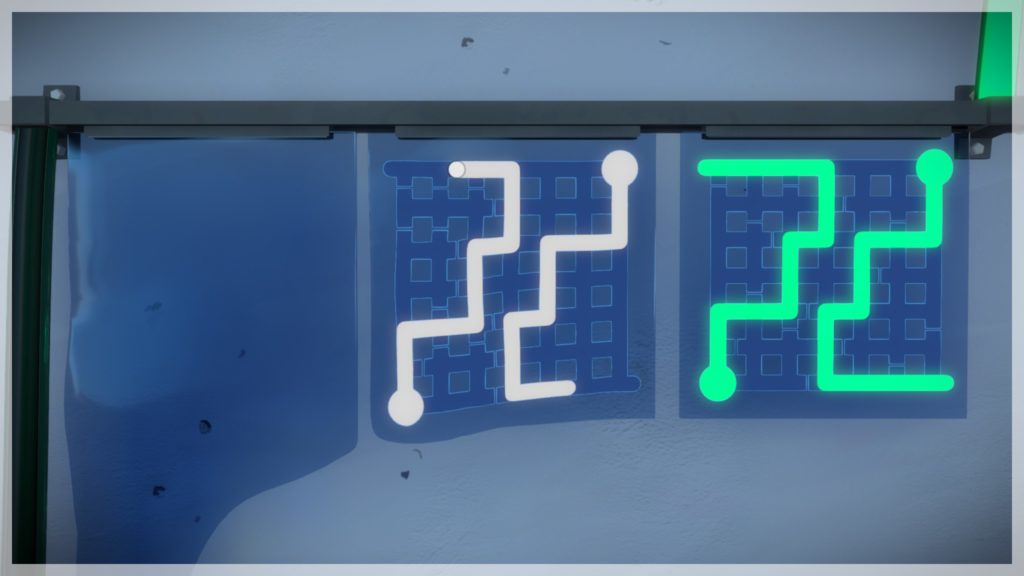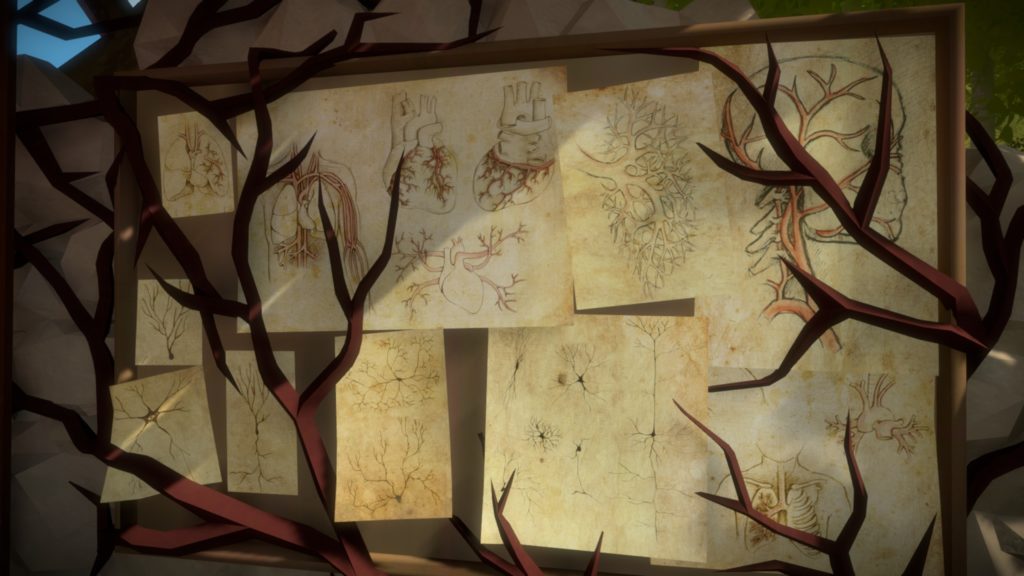
Given designer Jonathan Blow’s stature and, yes, his arrogance, it’s a little strange to think this is only his second game. He has apparently stated that his next project has an unheard of 20-year development schedule. For all that I agreed that Braid was a work of genius, it’s hard not to be annoyed by how full of himself this guy is.
Like the previous title this is also a puzzle game but everything about it is different. It’s 3D and set on an island crammed with puzzles. The inspiration is Myst but since I never played that it reminded me of The Talos Principle instead. The graphics are blocky with vivid colors and simple textures. But due to the excellence of the art direction, it looks fantastic. In fact, every aspect of the production is carefully considered and crafted to perfection, the level design, the sound, the simple interface. Exploring the island is a joy in of itself as there are so many details strewn everywhere. You never know when you might come across a random puzzle, an intriguing statue or a voice recording of an excerpt from some text. In a way, it’s maddening as the puzzles and various game elements aren’t all neatly delineated and signposted so you have to look everywhere and pay attention to everything. But it does make the island feel like an incredibly rich and interesting playground.

The puzzles themselves are based around deceptively simple 2D mazes. You simply trace a path from the start of the maze to the exit. As the puzzles get more complex however, you must comply with more and more rules, such as requiring that your path pass through certain points in the maze. The Witness never offers any instructions on what the rules are or what the various symbols mean. Instead you must infer them for yourself by trying out the simpler puzzles in which new symbols and rules appear. As you might expect, these rules start out simple but get progressively more complex and by the end of the game you have puzzles incorporating all of the rulesets you have learned and they’re nightmarishly difficult.
Another lesson that the game teaches you early on is that not everything that is need to solve the puzzles can be found on the puzzles themselves. Many puzzles require correctly noticing clues that are found in the environment. Reflections, sound, seeing the puzzle from a different perspective and so on all play a part. I have to admit that this is where the game lost me and I relied to a walkthrough to complete almost all of the late game puzzles. In order to solve them honestly, you really have to obsessively look all around the puzzles. It gets worse when the clues are deliberately obscured or partially destroyed, so you must mentally reconstruct what is missing or simple explore the missing space through trial and error. Working through the clues on a pencil and paper is an absolute necessity and I have to confess way more work than I was willing to put up with. When I reached the point where puzzles require noticing color and how the colors change when seen under different light and my color blindness problems as well as hearing the differences in sounds of different pitches even under the cover of random noises, I felt zero guilt about looking up solutions rather than doing the work.

Braid of course is famous for how its puzzle design perfectly complements its theme of how time and space distorts perception and memory. The Witness is no less philosophically ambitious but I would argue that it is less coherent. The various voice recordings scattered around talk about duality, the value of quiet contemplation, perhaps the futility of searching for any ultimate meaning and so on. More importantly you can find what amount to special codes that when used in an in-game auditorium allows you to view various videos, including one that is an hour-long lecture. It’s a mixed bag of messages but I like the bit about how trying to read too much into things is an exercise in futility. I also like to think of the entire island as the scientific method gamified as you have to infer what the governing rules are through observation and testing solutions.
Still though I readily admit the genius behind this game’s design and there certainly are puzzles that are simply beautiful, I find that I dislike it as a game. Part of it is that it demands a much higher level of commitment than I’m willing to give it. But part of it is also the way takes its conceits up all the way. For example the series of puzzles that require you to read scratches on the puzzles from light reflections wants you to move around the puzzles in all sorts of ways to catch the reflected light at just the right angle. Often you need to do it more than once as well to view the entire puzzle. That’s clever the first couple of times but then gets tiresome really fast. Finally while the philosophizing bits are indeed intriguing and I will forever appreciate being introduced to the Secret of Psalm 46, Blow’s arrogance does grate on me even as the game discourages you from reading too much meaning into it. This is perhaps a more intelligent game but I actually prefer the tighter, more coherent and I suppose significantly easier The Talos Principle to it.
One thought on “The Witness”